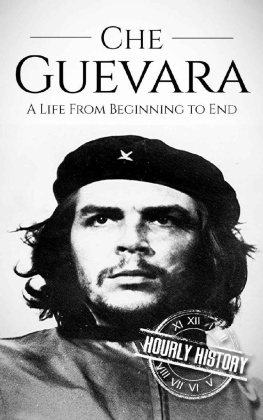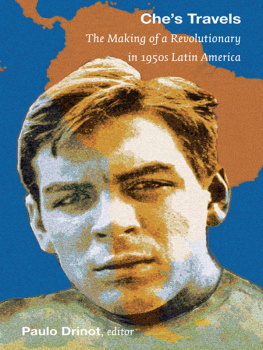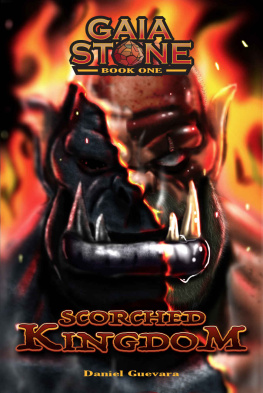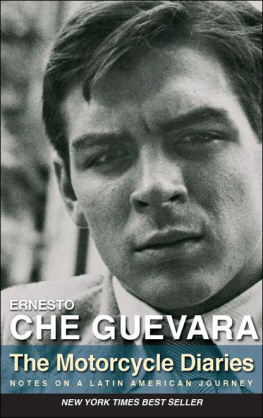TRAVELING WITH
CHE GUEVARA
The Making of a Revolutionary
ALBERTO GRANADO
Translated by Luca lvarez de Toledo

Newmarket Press NewYork
Contents
I n 1952 Ernesto Guevara and his friend Alberto Granado, the owner of the famous motorcycle, set off to travel around South America. Guevara, who was twenty-three, was about to graduate as a doctor. Granado, six years his senior, was already a doctor and a biochemist. The trip was Albertos idea but Ernesto had never needed much persuasion to embark on an adventure.
Both men kept diaries of the journey. Guevaras was published by his estate long after his death in Bolivia in 1967 while Granados was first published in Spanish in Cuba in 1978. In Spanish, Italian and French both diaries were published together. Granado had the advantage over Guevara of being still alive and therefore was able to revise his version of events and produce a more complete picture. Also, at twenty-nine he already had a political conscience. But what really makes Granados account of the journey so riveting is that as well as describing the journey, he is reporting his friends reaction to their adventures, thus unwittingly giving us a candid picture of the man who was to become Che GuevaraLatin Americas foremost revolutionary hero who later would say of himself: I was born in Argentina, I fought in Cuba, and I became a revolutionary in Guatemala. He was to die in Bolivia, fighting for the oppressed of the continent, having said that he had never felt like a foreigner in any country of Latin America. The journey described in this book marks the beginning of that discoverythat he was one with the poor and downtrodden of the Americas.
Later he would explain in his writings that because of the precarious conditions in which he traveled he was able to stay in touch with the people and see at close quarters the poverty, hunger and disease that afflicted them. It was during this journey that he realized that as a future doctor he would not be able to help these people because of the political make-up of the continent. It would not be enough to cure the effects, it was the causes that had to be attacked. So the man who had been an admirer of Gandhi for his belief in non-violence was to turn to arms to pursue his objective of liberating the poor and the disenfranchised of the Americas.
And yet, Guevara was a man full of humor and mirth, capable of huge pranks and practical jokes. He loved parties and drinking and women. The Guevara de la Sernas were a formidable clan who stayed close and united even after Ernesto became a Cuban public figure. And Alberto Granado, who at the end of this journey, had settled and married in Venezuela, was to join him in Cuba to support the revolution, not as a soldier, but as a scientist.
Walter Salless film The Motorcycle Diariesstarring Gael Garca Bernal, Mia Maestro and Rodrigo de la Sernais based on the two diaries, and Alberto Granado was on location at Salless side throughout the shoot as an adviser thus bringing to the cinematic narration of the story the true flavor of the Latin America of the fifties.
L.. de T.
February 2003
M y friend Ernesto Guevara de la Serna nicknamed me The Sedentary Gypsy because I was always dreaming up lengthy journeys for us to make while at the same time wishing to stay at home with my family and friends. He knew me well.
Today, almost sixty years later and owing to a whole range of different circumstances The Sedentary Gypsy has returned to the scene, leaving behind the peace and quiet of his home in the agreeable city of La Habana, where he has spent the past forty-three years surrounded by the warmth of his friends, students and colleagues and the love of his children and grandchildren.
How can I explain such a radical change in my life? I believe there is only one answer: I retired from my scientific career in order to give way to the new generation who are now mature enough to make their own contribution in the field of genetics. And I imagined a period of quiet. But one must be true to oneselfand the ever-present desire to see new skies even when it really meant revisiting skies that I had seen before....
How did the marvelous adventure that I describe begin?
Let me give you a brief summary of what happened: when in 1978, after the avalanche of propaganda caused by the death of my friend Ernesto Che Guevara had abated and false friends and pseudo-historians had finally calmed down, I decided to publish my diary of the journey that Ernesto and I had embarked on together.
The purpose of publishing it was to show the world that Ernesto was a man of flesh and blood and not a sort of mythological being, as some unscrupulous friends would have him appear, and above all, the enemies of my friends revolutionary ideas, who by transforming him into a myth hoped to prove that it was impossible to follow his example.
Following the success in 1992 of the Italian edition of both our diaries in a single volume called Latinoamericana, the long standing dream of transferring to the screen our wonderful journey across our long-suffering and beloved South America finally became a reality.
The opportunity then arose for me to act as a consultant during the shooting of the film and the documentary made about the film that was shot on location simultaneously. I had a choice between battling against my eighty years and going back on the road to relive the trip or staying and keeping company with other old people and doing the research for my new literary project on the similarities between Mart and Guevara.
But my indecision did not last long because I felt compelled to be with the actors and the director on location to ensure that fiction came as close as possible to the events that had taken place half a century earlier.
At the same time life allowed me to fulfill one of my most cherished dreams: to take my family to the places that I had so often told them about.
As has so often been the case, real life surpassed my expectations, and the reception I got from the actors, the director and the crew was fabulous and almost all my advice and suggestions were readily accepted. Of course that happened after an exchange of ideas and opinions which made me learn two things: the first is that once more fortune had brought together men and women of great sensitivity to make a film which is faithful to the spirit of what both Ernesto and I had poured into our diaries. And the second thing is how difficult and time-consuming it is to make a good job of shooting even apparently very simple scenesfor example, the scene in which Ernesto and I bid farewell to our beloved Poderosa II, a scene which in real life only took a few brief minutes, required more than half an hour before the director was satisfied. The most extraordinary thing is that gradually I realized that each time a scene was repeated it drew closer and closer to reality.
I also learned that although every crewmember seemed to be only interested in their own task, these individual efforts collectively resulted in creation of great quality.
As my readers will imagine, being the spectator of such a journey half a century later enabled me to relive moments of emotion with my loved ones who were accompanying me. But nothing was as deeply felt as the meeting with several of the patients afflicted with leprosy who remembered our stay at the leprosarium of San Pabloand this peaked when the youngest of them (who back in 1952 was fifteen years old) recalled the moment in which I shook his hand without putting on gloves when we met and said affectionately: After you two visited our hospital, people were kinder to us.








